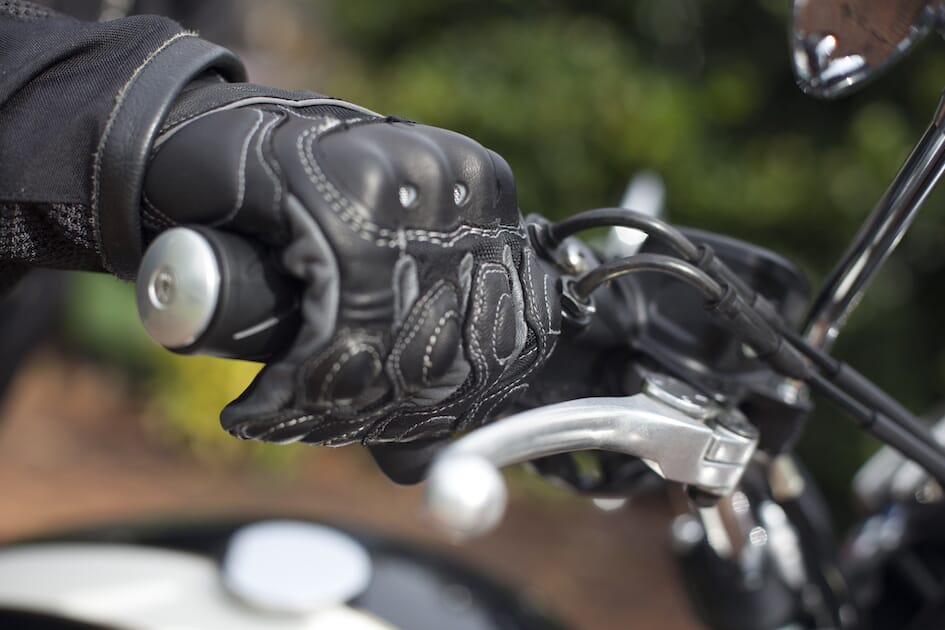How to Change Motorbike Cables

The humble throttle, brake and clutch cables are vital components for a motorbike. Without them, you simply could not ride your bike.
So, when these cables become worn, damaged and frayed, it is important you change and replace them to maintain a safe ride. Higher grade motorbike cables can also help improve the performance of a bike, something worth noting for anyone racing or participating in long-journeys.
In this article, we provide an overview of how to change and replace motorbike cables and tips on buying the best cables to increase their lifespan.
When Should you Replace your Cables?
Regular visual inspections help to identify when motorbike parts, such as cables, may need replacing. Following the cables and inspecting for any damage will help to suggest if there are any clear problems with the cables.
Motorbike owners should get into the habit of regularly checking their bike, particularly before long journeys. The more familiar you are with your bike, the easier it is to spot potential problems.
But sometimes cables will need replacing without showing clear exterior damage. This could be because the inner wire is frayed but the outer conduit looks perfectly fine. Poor engine performance or braking performance may highlight problems with the cables. Spongy brakes are a common result of brake cables that have worn or stretched. Similarly, experiencing problems controlling the bike in general could suggest compromised cable performance.
Your manual may also highlight when cables need replacing which can help offer some guidance as to when they have reached the end of their lifespan.
If in doubt, get an expert’s opinion. They can quickly run some tests and inspect the cables to determine if they need replacing or not.
If you are putting your bike under more pressure, such as dirt bike racing, you may find changing cables is more common than if you were just riding around town.
How to Change and Replace Motorbike Cables
- Find Quality Cables
The first job is to find some quality replacement cables. Not all motorbike cables are created equally so ensure you replace your old cables with premium quality cables that will last the test of time. Stainless steel wiring and Teflon lined conduit are examples of materials likely to produce a cable that lasts much longer than regular cables.
- Determine the Correct Length Required
You will also need to determine the correct length for the cable. Bikes come in all shapes and sizes, so you want to ensure the cables fit perfectly to your specific bike. The easiest way to do this is to check whether you are using a cable built to the original specs of the bike, or if it has been increased or decreased in length to accommodate a change such as higher or lower bars.
Original Equipment Manufacturer (often referred to as OEM) cables often have a part number printed in white somewhere on the black outer conduit. This can be used to help identify your part.
- Loosen Nut to Release Existing Cable
To start the cable replacement, you’ll need to loosen the nuts, brackets or clips that hold the cable in place. Once these are removed, the cable should become slack and you’ll be able to remove it.
- Attach New Cable and Fasten
Attach the new cable and fasten in place. Lubricate the cable before installation.
In routing the cable, ensure that there is a gap between the cable and any heat source and keep ties loose to allow the cables to move.
Once the cable has been installed, check the steering lock and check the operation of the cable at both extremes of steering in the same way as when adjusting the free play.
Premium Motorbike Cables from Venhill
Here at Venhill, we make pattern cables and hydraulic lines for modern and classic and motorbikes (both on and off-road), quads, cars and karts, alongside control cables for industrial applications. Our cables and brake lines are designed to combat common cable problems like catching, wear, stretching and also bowing, bursting, leaking and other issues found with hydraulic hoses.
We aim to ensure all our products perform better, for longer.
Introduced in 1995, Venhill Featherlight cables are made in the UK, using marine-grade stainless steel inner wire that runs through a Teflon lined conduit, reducing friction and giving a light action, easing pressure on the hand, especially in stop/start traffic and during long rides. The Teflon lining also removes the need for heavy lubrication. Each cable is ‘bird-caged' – a special process applied to the end of the inner wire, which allows solder to penetrate the weave of the cable, making the bond with the nipple much stronger. This process adds extra strength and durability, so cables can withstand being put under repeated stress and pressure. Our motorbike cable range includes:
Motorcycle Choke and Decompression Cables – learn more about choke and decompression cables.
Motorcycle Clutch Cables – learn more about clutch cables.
Motorcycle Brake Cables – learn more about brake cables.
Motorcycle Throttle Cables – learn more about throttle cables.
Seat Lock Cables – learn more about seat cables.
For advice and for the purchase of top-quality cable, including marine grade stainless steel inner wire and PFTE (Teflon) lined conduit for super low friction smooth operation, get in touch with our expert team or browse our online shop today.
Our line builder is also a simple tool to help you get the right cables based on your specifications.


